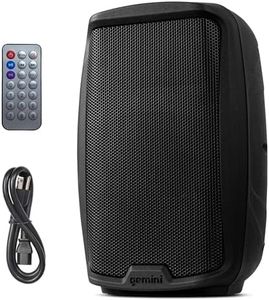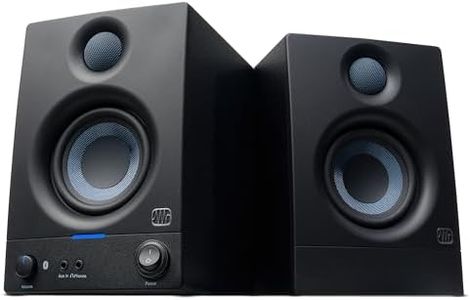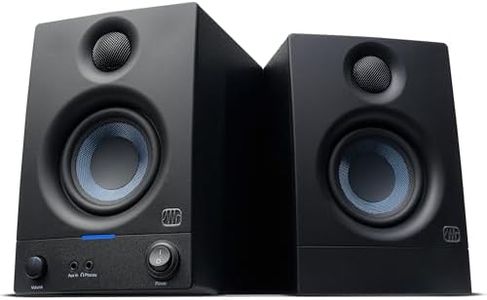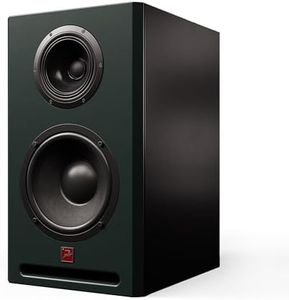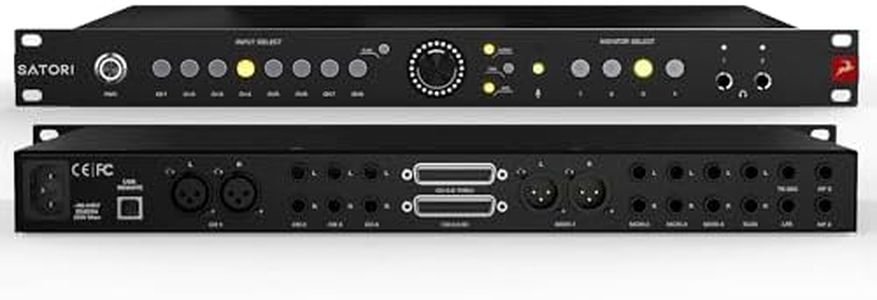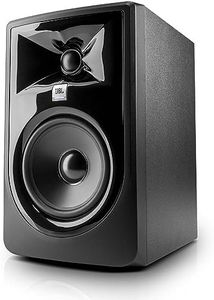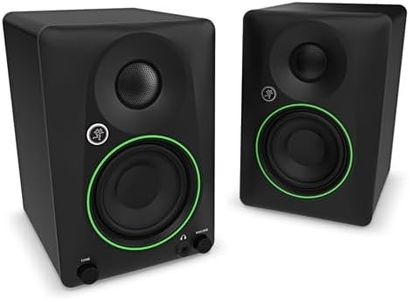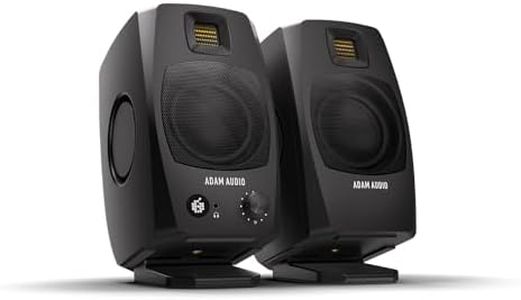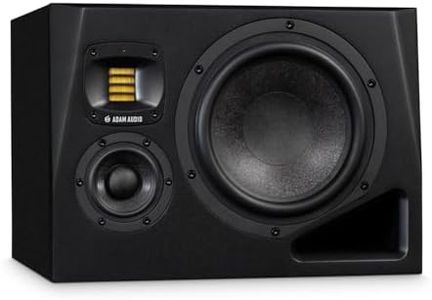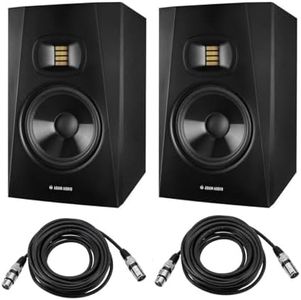10 Best Dj Monitors 2025 in the United States
Our technology thoroughly searches through the online shopping world, reviewing hundreds of sites. We then process and analyze this information, updating in real-time to bring you the latest top-rated products. This way, you always get the best and most current options available.

Our Top Picks
Winner
PreSonus Eris 3.5BT Studio Monitors, Pair — 3.5" Inch Powered Bookshelf Speakers, Stereo, Desktop Computer, Near Field Music Production, Audio Mixing Recording
Most important from
26211 reviews
The PreSonus Eris 3.5BT Bluetooth Studio Monitors offer a versatile solution for desktop, bookshelf, and DJ setups. These monitors deliver 50W of Class A/B power, ensuring sufficient volume without compromising on tonal balance or audio clarity. The 3.5-inch woven-composite drivers provide a smooth and accurate bass response, while the 1-inch silk-dome tweeters offer a natural high-frequency response. This combination ensures a balanced and clear sound, ideal for multimedia use, gaming, watching movies, or music production.
The Bluetooth 5.0 connectivity allows for high-quality wireless audio streaming, and the variety of input options, including 1/4-inch TRS, RCA, and 1/8-inch aux, ensure compatibility with a wide range of devices. The high and low acoustic tuning controls enable users to customize the sound to their specific room environment, enhancing the listening experience. The built-in headphone amp is a convenient feature for private listening sessions.
The relatively small driver size of 3.5 inches may not provide the same depth and power as larger monitors in more extensive setups or larger rooms. Additionally, while the frequency response goes up to 20kHz, the lower end might not cover the full spectrum required for all types of DJ performances. In conclusion, the PreSonus Eris 3.5BT monitors are best suited for small to medium-sized rooms and nearfield listening environments. They are highly versatile, easy to connect, and offer excellent sound customization, making them a solid choice for home studios, dorm rooms, and multimedia purposes.
Most important from
26211 reviews
Yamaha HS8 W 8-Inch Powered Studio Monitor Speaker, White
Most important from
1677 reviews
The Yamaha HS8 W Studio Monitor Speaker is a strong contender in the 'dj-monitors' category, particularly suited for those looking for precision and clarity in sound reproduction. With an impressive frequency response extending up to 30kHz, it caters to DJs and producers who require high-fidelity audio. The 8-inch dynamic driver and 120 watts of power output provide ample sound for small to medium-sized rooms. Its flat response design ensures that what you hear is an accurate representation of the input, which is crucial when mixing or producing music.
One of its standout features is the advanced noise reduction technology, designed to minimize interference in professional environments. The XLR connectivity offers a reliable connection to various audio devices, though it's worth noting this might limit usage with systems that require different connection types without adapters.
However, being floor-standing and weighing 23.5 pounds, it requires a dedicated space, which might not be ideal for smaller setups. Additionally, while the design is sleek and modern, the lack of waterproofing means it must be used in stable indoor environments. The Yamaha HS8 W is best suited for those who prioritize sound accuracy and have the setup to accommodate its size and connectivity needs. The consistent positive feedback from users, as reflected in a high customer rating, suggests satisfaction in performance, making it a reliable choice for serious audio work.
Most important from
1677 reviews
PreSonus Eris 3.5 Studio Monitors, Pair — Powered, Active Monitor Speakers for Near Field Music Production, Desktop Computer, Hi-Fi Audio
Most important from
26211 reviews
The PreSonus Eris 3.5 Studio Monitors are a solid choice for anyone looking to enhance their music production or audio experience, especially in smaller spaces. With a frequency response that reaches up to 20 KHz and a power output of 50 Watts, these monitors deliver clear sound and a surprisingly strong low end thanks to their 3.5-inch woven-composite woofers. This makes them well-suited for nearfield listening, where detailed audio clarity is essential.
One of the standout features is the ultra-wide listening sweet spot, which allows for great stereo imaging from various angles. This is particularly useful if you’re working in a small studio or a desk setup. Additionally, the high and low-frequency tuning controls enable you to adjust the sound to match your room’s acoustics, which adds a personalized touch to your audio experience.
On the connectivity front, the Eris 3.5 offers a variety of options, including balanced TRS inputs and an aux input for easier integration with different devices. The quick-switch headphone output is another practical feature, allowing you to reference your audio directly through headphones without having to unplug anything. These monitors are excellent for multimedia uses, gaming, and studio-quality music production in home or dorm settings. They provide a mix of power, clarity, and versatility that can meet the needs of budding producers or casual listeners alike.
